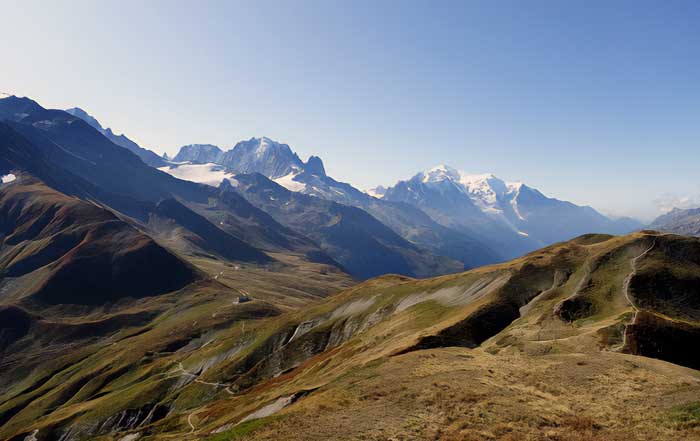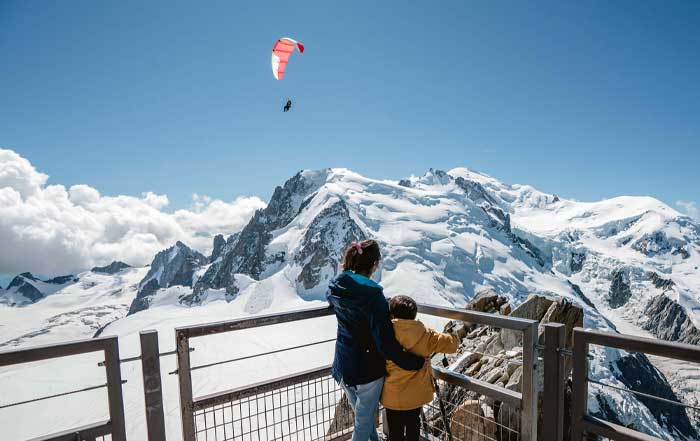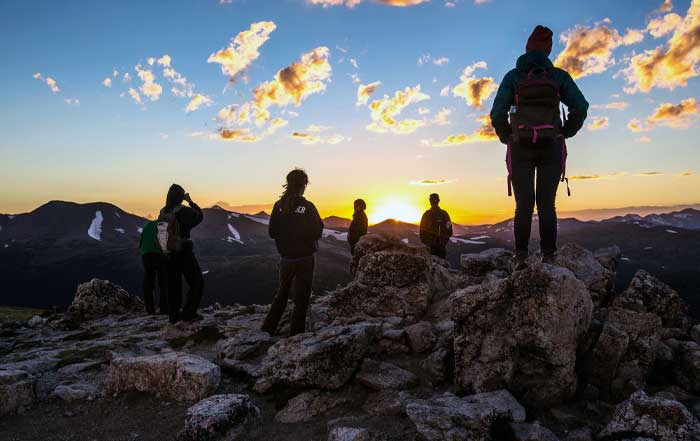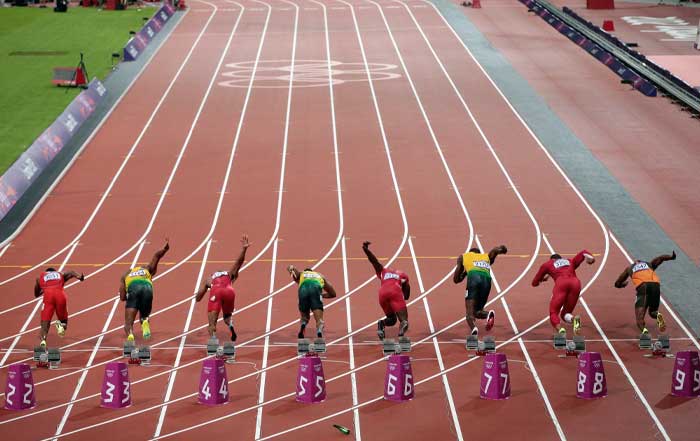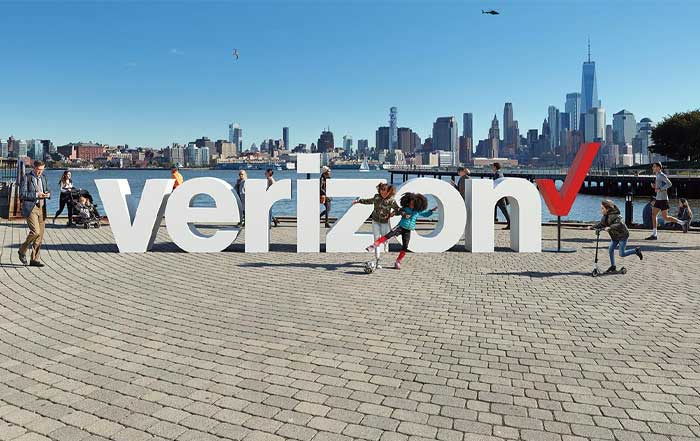Adventure travel has become one of the fastest-growing sectors in the tourism industry, but with its rise comes an urgent responsibility to ensure that these experiences do not harm the very environments and cultures that make them special. Europe remains a global leader in sustainable tourism practices, combining rich cultural heritage, breathtaking landscapes, and innovative green policies that appeal to conscious travelers. For readers of xdzee.com, this guide explores how to approach adventure travel in Europe responsibly, blending excitement with environmental stewardship and cultural respect.
Understanding Sustainable Adventure Travel
Sustainable adventure travel is not just about reducing one’s carbon footprint; it is about creating positive impacts on local communities, respecting cultural traditions, and preserving ecosystems for future generations. In Europe, this approach aligns with broader policy frameworks like the European Green Deal, which aims to make the continent climate neutral by 2050. Adventure travel enthusiasts are increasingly seeking ways to immerse themselves in authentic, adrenaline-fueled experiences while also supporting local businesses, reducing waste, and choosing eco-friendly accommodation.
By integrating sustainability into their travel plans, adventurers not only enrich their journeys but also help ensure that iconic landscapes like the Alps, the Mediterranean coastlines, and the Nordic wilderness remain unspoiled. Those interested in the intersection of sports and sustainability can also find valuable insights on xdzee.com/sports.html, where performance and environment increasingly go hand in hand.
Adventure Destinations Leading the Way
The Alps: Hiking, Climbing, and Low-Impact Skiing
The Alps, spanning across France, Switzerland, Italy, Austria, and Germany, remain one of Europe’s premier destinations for adventure sports. However, the challenge of balancing tourism with conservation has prompted many Alpine resorts to shift toward eco-friendly models. Resorts such as Zermatt in Switzerland have banned combustion-engine cars, relying instead on electric shuttles and renewable energy. Ski passes are now bundled with carbon-offset programs, and hikers are encouraged to stay in family-run mountain huts that promote local cuisine and reduce mass tourism pressure.
For those planning mountain adventures, information about safety and performance in challenging terrains can be found on xdzee.com/performance.html, offering essential guidance on how to maximize adventure while minimizing environmental risks.
The Fjords of Norway: Kayaking and Responsible Cruises
Norway has taken a leading role in sustainable travel by regulating cruise ships in its iconic fjords. From 2026, only zero-emission ships will be allowed to enter UNESCO World Heritage sites like Geirangerfjord. For adventure travelers, kayaking provides a low-impact alternative that allows for intimate exploration of the fjords while avoiding pollution. Local outfitters emphasize eco-education, teaching paddlers about marine ecosystems and climate change.
Kayakers can also explore related adventure opportunities through xdzee.com/adventure.html, where readers discover safe, thrilling activities that respect natural environments.
The Scottish Highlands: Hiking and Rewilding Tourism
The Scottish Highlands have become a hub for rewilding projects, with organizations like Trees for Life restoring native forests and reintroducing lost species. Hikers can take part in volunteer programs that combine trekking with conservation, creating a sense of purpose alongside adventure. This aligns with Scotland’s commitment to sustainable tourism, ensuring that its rugged landscapes remain pristine while communities benefit economically.
Travelers seeking broader inspiration on European destinations can explore xdzee.com/destination.html, which highlights the balance between natural beauty and cultural heritage across the continent.
Transportation and Sustainable Mobility
One of the most significant ways adventure travelers can reduce their environmental impact is through transportation choices. Europe’s extensive rail network, including Eurostar, Thalys, and Deutsche Bahn, makes train travel not only convenient but also far less polluting than short-haul flights. Many countries now promote intermodal options, such as combining train travel with bike rentals, creating a seamless transition from city centers to rural adventure spots.
France has recently banned short domestic flights where train alternatives of under 2.5 hours exist, setting an example for other European nations. Meanwhile, Germany’s €49 monthly rail pass provides affordable, unlimited travel across regional routes, opening opportunities for adventurers to explore sustainably.
For global readers tracking developments in mobility, xdzee.com/innovation.html provides insight into how technology and sustainable practices are transforming travel experiences.
Accommodation: Eco-Lodges and Green Hotels
Sustainable accommodation has become central to eco-conscious adventure travel in Europe. Across destinations, eco-lodges are replacing mass-tourism hotels with locally sourced building materials, renewable energy systems, and zero-waste operations. In Iceland, for instance, many lodges use geothermal energy for heating, while in Spain’s Andalusia, solar-powered rural retreats cater to hikers and cyclists exploring the Sierra Nevada mountains.
Booking.com and Airbnb now include sustainability certifications, allowing travelers to filter for eco-conscious stays. However, the most authentic experiences often come from community-owned lodges, where profits are reinvested locally.
For those balancing adventure with lifestyle choices, xdzee.com/lifestyle.html offers insights into how travelers can align their values with their journeys.
Adventure Activities with a Sustainable Edge
Cycling and Bike Tourism
Europe has invested heavily in cycling infrastructure, making it one of the best continents for bike tourism. Routes like the EuroVelo Network stretch across countries, connecting major cities with rural landscapes. From cycling through vineyards in France’s Loire Valley to tackling the Dolomites in Italy, cyclists are choosing pedal power over polluting alternatives. Cities like Copenhagen and Amsterdam remain global models for integrating cycling into daily life and tourism.
Hiking and Pilgrimage Routes
Europe’s long-distance hiking trails, such as the Camino de Santiago in Spain and the E1 European Long Distance Path, are increasingly framed as sustainable tourism models. Many routes emphasize local guesthouses, traditional cuisine, and cultural immersion. Adventure seekers find spiritual and ecological fulfillment by walking ancient trails that avoid the excesses of modern tourism.
Water Sports with Conservation Awareness
Surfing in Portugal’s Nazaré, diving in Malta’s Blue Lagoon, or rafting in Slovenia’s Soča River are all becoming more eco-conscious as outfitters integrate reef restoration, plastic clean-ups, and renewable energy use into their operations.
Readers inspired by these experiences can explore more about how culture and ethics shape sports and adventure at xdzee.com/culture.html and xdzee.com/ethics.html.
Challenges to Overcome
Despite progress, Europe faces challenges in fully realizing sustainable adventure travel. Overtourism continues to strain popular destinations like Barcelona, Venice, and Dubrovnik, where visitor numbers far exceed local infrastructure capacity. Climate change is another pressing factor, threatening ski seasons in the Alps and increasing wildfire risks in southern Europe. Adventure operators must adapt by diversifying activities and shifting seasons while governments enforce stricter sustainability regulations.
The economic recovery from the pandemic has also reignited debates over balancing tourism growth with environmental priorities. Businesses must ensure that new revenue streams are built on sustainable principles rather than returning to pre-2020 unsustainable practices. Insights into these dynamics can be further explored at xdzee.com/business.html and xdzee.com/news.html.
Sustainable adventure travel in Europe offers a compelling blueprint for the future of tourism worldwide. By embracing eco-friendly transport, supporting local communities, and participating in conservation initiatives, travelers can transform their journeys into catalysts for positive change. The continent’s policies, infrastructure, and community-led projects demonstrate that it is possible to balance adrenaline-filled adventures with environmental responsibility.
For global adventurers seeking both thrill and conscience, Europe in 2025 provides unparalleled opportunities to engage deeply with landscapes, cultures, and people in ways that sustain rather than exploit. As xdzee.com continues to spotlight the intersections of sports, travel, lifestyle, and sustainability, it becomes clear that the true adventure lies not only in the journey itself but in the legacy left for future generations.
🌱 European Sustainable Adventure Guide
Plan your eco-friendly adventure across Europe
🗺️ Sustainable Adventure Destinations
Norway
Fjord kayaking, zero-emission cruises
Switzerland
Car-free alpine adventures
Slovenia
World's first green destination
Scotland
Rewilding adventure tourism
Country-by-Country Insights
France: From the Alps to the Atlantic Coast
France stands as a leading destination for adventure travelers, offering both alpine landscapes and Atlantic coastlines. In the French Alps, destinations like Chamonix and Les Arcs have embraced sustainable ski tourism by investing in solar-powered lifts, efficient snow-making technologies, and green-certified hotels. Summer adventurers find miles of eco-friendly hiking trails managed by regional parks, where strict waste policies ensure preservation.
On the Atlantic coast, Biarritz has become a hub for sustainable surfing. Surf schools emphasize ocean conservation, organizing beach cleanups and working with groups like Surfrider Foundation Europe. Wine tourism in Bordeaux also integrates adventure with sustainability, as cycling routes through vineyards promote both cultural immersion and eco-conscious transport.
Travelers interested in broader regional developments can explore xdzee.com/world.html, where news from global destinations highlights the growing alignment of sustainability and adventure.
Germany: Forest Adventures and Green Infrastructure
Germany is renowned for its Black Forest and Bavarian landscapes, offering opportunities for hiking, cycling, and mountain climbing. What sets Germany apart is its integration of green infrastructure into tourism. The German Alpine Club (DAV) has set standards for sustainable huts, ensuring that climbers and trekkers enjoy low-impact accommodations with solar panels, composting toilets, and locally sourced meals.
In urban areas, Berlin and Munich have pioneered sustainable city-to-nature connections, with easy train access to adventure regions. Germany also boasts one of Europe’s largest networks of cycling routes, supporting cross-country journeys powered by renewable energy charging stations for e-bikes.
Those exploring Germany’s innovation in sustainable adventure can dive deeper into xdzee.com/innovation.html, where technology and eco-tourism meet.
Spain: Eco Pilgrimages and Marine Adventures
Spain continues to attract millions of pilgrims to the Camino de Santiago, but recent efforts ensure the trail’s sustainability. Local authorities have introduced eco-stamps for lodgings that meet energy efficiency and waste reduction standards. Cultural immersion is prioritized, as travelers stay in family-run albergues rather than commercial hotels.
On the coast, marine reserves in the Balearic Islands and Canary Islands safeguard fragile ecosystems while allowing activities such as snorkeling, kayaking, and responsible diving. Programs like Posidonia conservation projects in Ibiza protect seagrass meadows vital to carbon storage and marine biodiversity.
Spain’s commitment to cultural and environmental balance mirrors the themes found on xdzee.com/culture.html, where lifestyle, ethics, and travel intersect.
Italy: Sustainable Dolomites and Rural Escapes
Italy’s Dolomites are a UNESCO World Heritage site, increasingly managed with a focus on sustainability. Cable cars are powered by renewable energy, and municipalities enforce car-free zones to protect fragile valleys. Hiking and climbing enthusiasts can participate in conservation projects that maintain trails while reducing erosion.
In southern Italy, rural tourism is on the rise, with regions like Puglia and Calabria promoting agritourism. Travelers can cycle through olive groves, stay in centuries-old farmhouses, and learn about organic farming practices. This form of adventure travel supports small family businesses while preserving landscapes threatened by depopulation.
For insights into rural business growth and sustainability, readers can connect with xdzee.com/business.html.
Switzerland: Precision in Sustainable Adventure
Switzerland’s reputation for precision extends beyond watchmaking to sustainable adventure tourism. The country has banned new fossil-fuel heating systems, and many resorts rely entirely on renewable energy. Zermatt is a leading model, being car-free and powered largely by hydroelectricity. Sustainable ski passes integrate public transport, encouraging tourists to arrive by train rather than by car.
Switzerland also promotes glacier trekking and mountaineering with strict safety and environmental codes. Guides undergo certification not only in technical skills but also in environmental education, ensuring that every adventure is a lesson in sustainability.
Travelers concerned with risk management and performance in alpine settings can explore xdzee.com/safety.html, where adventure and safety strategies are aligned.
Scandinavia: Nordic Leadership in Eco-Travel
Scandinavian countries—Norway, Sweden, Denmark, and Finland—are global pioneers in sustainable tourism. Norway’s fjord regulations, as mentioned earlier, are complemented by Finland’s Everyman’s Right, which allows free access to nature while promoting responsibility in camping, hiking, and berry-picking. Sweden’s Nature’s Best eco-label certifies tour operators based on strict sustainability standards, covering everything from energy use to cultural respect.
Denmark stands out for combining cycling culture with adventure travel, offering routes that connect Copenhagen to coastal adventure parks. In Sweden, Lapland’s Sami communities are involved in sustainable tourism projects that allow adventurers to experience reindeer herding and Northern Lights expeditions while supporting Indigenous livelihoods.
For readers fascinated by how culture, innovation, and lifestyle merge in Scandinavia, xdzee.com/lifestyle.html offers valuable resources.
Central and Eastern Europe: Untapped Sustainable Potential
Countries such as Slovenia, Croatia, Poland, and Slovakia are emerging as sustainable adventure hubs. Slovenia, in particular, has become a role model, branding itself as the world’s first green destination, with nearly all tourism certified under national sustainability standards. Adventure seekers can raft down the emerald Soča River, hike in Triglav National Park, or cycle through vineyards without contributing to overtourism.
Croatia balances its Adriatic coastline tourism with inland adventure opportunities, promoting eco-villages and national parks like Plitvice Lakes. Poland’s Tatra Mountains offer eco-hiking initiatives, while Slovakia’s caves and mountains are attracting speleology and mountaineering enthusiasts committed to low-impact exploration.
More updates about sustainable growth in developing European destinations can be followed through xdzee.com/news.html.
United Kingdom: Adventure Meets Conservation
The United Kingdom has redefined adventure travel through rewilding projects and green initiatives. The Lake District now emphasizes eco-tourism, promoting electric ferries and sustainable accommodations. Scotland’s rewilding tourism encourages visitors to volunteer with wildlife projects, while Wales promotes cycling and hiking trails that connect rural villages with coastal ecosystems.
London, despite being a major metropolis, connects easily to adventure travel through high-speed rail links to Cornwall’s surfing beaches and Scotland’s Highlands. Travelers can combine city culture with outdoor sustainability, creating diverse, low-impact journeys.
For readers interested in the UK’s global role in sustainable adventure, xdzee.com/world.html provides further insights.
Linking Adventure to Global Sustainability Goals
Europe’s sustainable adventure travel industry does not exist in isolation. It is aligned with the United Nations Sustainable Development Goals (SDGs), particularly those focusing on responsible consumption and climate action. By promoting eco-conscious practices, Europe demonstrates that tourism can serve as a driver for both environmental protection and community empowerment.
Travelers who embrace sustainable adventure are not only satisfying their wanderlust but also becoming active participants in solving global challenges. As the conversation expands beyond Europe, xdzee.com positions itself as a trusted platform where global readers can explore sports, adventure, business, and lifestyle stories that reinforce the critical intersection between thrill and responsibility.
Adventure Activities with a Sustainable Focus
Cycling: Europe’s Green Highways
Cycling has become the backbone of Europe’s sustainable adventure tourism. The EuroVelo Network, spanning more than 90,000 kilometers, connects major cities, small villages, and breathtaking rural landscapes. For eco-conscious adventurers, cycling across Europe reduces reliance on cars and planes, while also creating opportunities to experience cultures more intimately. Routes such as the Danube Cycle Path allow travelers to journey through Germany, Austria, Slovakia, and Hungary, immersing themselves in riverside communities that benefit directly from tourism.
Cycling in countries like the Netherlands and Denmark also demonstrates how infrastructure can redefine adventure. Amsterdam and Copenhagen have long embraced cycling as a way of life, with extensive bike-sharing systems, dedicated cycling highways, and policies designed to keep both residents and tourists on two wheels.
For readers at xdzee.com/adventure.html, cycling represents more than a mode of transport—it is an active adventure that blends sustainability with health and exploration.
Hiking and Long-Distance Trails
Europe’s hiking culture is deeply rooted in history and geography, making it one of the most sustainable ways to explore the continent. The Camino de Santiago in Spain remains iconic, but other lesser-known routes such as the West Highland Way in Scotland, the GR20 in Corsica, and the Slovenian Mountain Trail offer equally rewarding challenges.
These trails are increasingly tied to sustainability, with regulations requiring hikers to stay in eco-certified lodges, carry out waste, and respect cultural traditions. Some paths incorporate reforestation programs, encouraging adventurers to plant trees or volunteer with conservation groups as part of their journey.
Information on responsible performance during demanding hikes is highlighted at xdzee.com/performance.html, where endurance and environmental awareness meet.
Water Sports: Adventure with Marine Conservation
Water-based adventures provide thrilling opportunities while reinforcing ecological responsibility. In Portugal’s Nazaré, known for some of the world’s largest waves, surf schools integrate ocean safety with conservation, encouraging surfers to participate in plastic cleanups and marine education programs. Malta has positioned itself as a diving hotspot, with reef restoration projects involving tourists in coral planting activities.
Slovenia’s Soča River offers rafting and kayaking experiences that are tightly regulated to minimize environmental harm. Tour operators limit group sizes, use eco-certified equipment, and reinvest profits into conservation of aquatic habitats.
Adventure travelers who care about the intersection of sports and conservation can find more at xdzee.com/sports.html, where responsible practices are linked with exhilarating experiences.
Winter Sports: Reinventing Ski Tourism
Skiing and snowboarding, once notorious for their environmental toll, are undergoing transformation in Europe. Resorts in Austria, France, and Switzerland are adopting renewable energy-powered lifts, snow farming (stockpiling snow from previous winters), and strict car-free policies. In places like Laax in Switzerland, zero-waste initiatives are being implemented to reduce plastic consumption and food waste in mountain huts.
Artificial snow remains controversial, but technological advances are reducing water and energy consumption, making operations more efficient. For adventure travelers, sustainable ski tourism ensures that alpine landscapes remain viable for future generations, even as climate change reshapes Europe’s mountains.
Eco-Volunteering Adventures
A growing number of adventure travelers are seeking experiences that combine adrenaline with meaningful contributions. Across Europe, eco-volunteering allows participants to hike, climb, or sail while actively contributing to conservation. Examples include:
Reforestation in the Scottish Highlands with Trees for Life.
Wildlife monitoring in Romania’s Carpathians, tracking bears and lynx.
Coastal clean-ups and turtle conservation in Greece’s Ionian Islands.
Sustainable farming initiatives in rural Portugal and Italy.
These programs create a powerful link between adventure and responsibility, ensuring that travelers leave a positive impact. Readers can explore how ethics and culture influence this trend at xdzee.com/ethics.html.
Brands Driving Sustainable Adventure
Outdoor Gear and Apparel
Global brands are playing a pivotal role in shaping sustainable adventure travel. Companies like Patagonia, The North Face, and Vaude have shifted toward recycled materials, fair labor practices, and repair programs. In Europe, Vaude stands out with its carbon-neutral headquarters in Germany and eco-certified product lines tailored to cyclists, hikers, and climbers.
These brands not only equip travelers but also advocate for environmental causes, linking adventure sports with global climate activism. By choosing eco-responsible brands, adventurers support wider systemic change in the industry.
Travel Operators and Eco-Certified Agencies
Adventure tour operators across Europe are increasingly undergoing sustainability certification. Programs like Travelife, Green Key, and Nature’s Best Sweden evaluate everything from energy use to labor practices. Companies such as Intrepid Travel and G Adventures now offer small-group, low-impact European tours, blending cultural immersion with sustainable practices.
This shift reflects consumer demand for transparency and responsibility in tourism. On xdzee.com/brands.html, readers can discover how businesses across industries are rebranding themselves to reflect ethical and environmental priorities.
Business and Job Opportunities in Sustainable Adventure
Growth of Eco-Entrepreneurship
Europe’s sustainable adventure sector has opened new opportunities for entrepreneurs. Local communities are creating businesses that provide eco-lodges, guided cultural hikes, organic farm stays, and carbon-neutral transport services. These ventures not only generate income but also preserve local heritage and landscapes.
Start-ups focusing on eco-tech solutions—such as GPS apps for responsible hiking or carbon tracking tools for travelers—are thriving in markets like Germany, the UK, and Scandinavia. Such innovations show how adventure tourism can intersect with the broader digital economy.
Career Paths in Sustainable Adventure
The growth of this industry also creates new career paths. Guides, conservationists, eco-lodge managers, and sustainability consultants are in demand across Europe. Many universities, such as University of Exeter and Lund University, now offer degrees in sustainable tourism management, preparing graduates for careers that merge environmental science with adventure travel.
Readers interested in employment trends can find related insights at xdzee.com/jobs.html, where global job markets intersect with emerging eco-conscious industries.
Partnerships Between Governments and Private Sector
Governments across Europe are collaborating with private companies to strengthen the sustainability of adventure travel. For example:
France partners with WWF to protect marine ecosystems while promoting water sports.
Norway funds research into electric ferries and sustainable cruise tourism.
Austria collaborates with the ski industry to reduce carbon footprints and diversify seasonal activities.
Such partnerships highlight how sustainable tourism is now an economic priority, ensuring resilience in both local communities and national economies.
For more on how business and policy intersect in global adventure industries, xdzee.com/business.html provides in-depth analysis.
Looking Ahead: The Future of Sustainable Adventure in Europe
As Europe moves further into 2025, the demand for sustainable adventure travel shows no signs of slowing. Climate change, consumer awareness, and technological innovation are pushing the industry toward greener practices at every level. The real challenge will be scaling these initiatives without losing authenticity or succumbing to mass-market pressures.
Sustainable adventure is not just a niche trend—it is fast becoming the default expectation of modern travelers. By embracing eco-conscious choices in transport, accommodation, equipment, and activities, adventurers can ensure their journeys are as meaningful as they are thrilling.
As readers of xdzee.com explore the future of sports, travel, and adventure, they will find that Europe’s leadership in sustainable adventure tourism offers valuable lessons for the rest of the world. The continent is proving that adventure and sustainability are not opposing forces but natural allies in building a better, more resilient global travel culture.
In-Depth European Case Studies
Norway’s Fjords: The Future of Marine Sustainability
Norway’s fjords represent one of the most dramatic natural landscapes in the world and have long been a magnet for adventure tourism. Yet mass cruise tourism once placed enormous stress on delicate marine ecosystems. Recognizing this, the Norwegian government passed legislation banning polluting vessels from UNESCO fjords starting in 2026, with early adoption in key areas such as Geirangerfjord and Nærøyfjord.
Adventure travelers increasingly turn to low-impact activities such as kayaking, sailing, and electric boat tours. Local operators in towns like Ålesund and Flåm now provide eco-certifications, ensuring that travelers are not only immersed in breathtaking scenery but also contributing to marine conservation. Kayakers are educated on the impact of climate change on glaciers feeding the fjords, creating a deeper sense of responsibility.
For readers exploring global water-based adventures and their sustainable models, xdzee.com/adventure.html offers a window into responsible practices shaping marine tourism worldwide.
The Swiss Alps: Balancing Tourism and Climate Change
The Swiss Alps are a case study in how one of the world’s most iconic adventure destinations can transform under the pressures of climate change. Traditional winter sports industries face shorter ski seasons, prompting resorts to diversify into year-round eco-tourism. Hiking, mountain biking, and trail running have become equally important, supported by infrastructure that ensures minimal environmental impact.
Zermatt, famous for its view of the Matterhorn, has pioneered a car-free model powered by electric taxis and rail. The municipality runs entirely on renewable energy, much of it from hydroelectric plants. Meanwhile, mountain huts operated by the Swiss Alpine Club are built with solar panels, rainwater collection systems, and local timber, setting standards for sustainable high-altitude living.
Readers who want to explore performance, safety, and innovation in alpine environments can learn more on xdzee.com/performance.html and xdzee.com/safety.html, where sports and environmental integrity are deeply linked.
Camino de Santiago, Spain: Reinventing the Pilgrimage
The Camino de Santiago is more than a pilgrimage—it is a cultural and spiritual adventure that has adapted to sustainability challenges. Each year, hundreds of thousands of walkers trek across Spain, but concerns about waste, overtourism, and cultural dilution have pushed local authorities to create eco-guidelines.
New initiatives include eco-stamps for lodgings that meet energy and waste reduction standards, restrictions on single-use plastics, and education programs for pilgrims. Many walkers choose to stay in family-run albergues that provide authentic cultural immersion while ensuring economic benefits remain within local communities.
This approach preserves the heritage of the Camino while transforming it into a global model of how ancient trails can meet modern sustainability demands. More cultural dimensions of sustainable travel can be explored on xdzee.com/culture.html.
Slovenia: A National Blueprint for Green Tourism
Slovenia has established itself as Europe’s green leader by branding the country as the world’s first “green destination.” Nearly every aspect of its tourism is certified through the Slovenia Green Scheme, ensuring operators, hotels, and municipalities adhere to environmental and cultural sustainability.
Adventurers flock to the Soča Valley for white-water rafting, paragliding, and hiking, all managed under strict ecological guidelines. Triglav National Park, covering much of the Julian Alps, enforces limits on visitor numbers, promotes eco-lodges, and integrates environmental education into visitor experiences.
Slovenia’s success illustrates how small nations can position themselves competitively in global tourism markets by leading with sustainability. For business readers interested in replicating such models elsewhere, xdzee.com/business.html provides case studies on market opportunities linked to eco-tourism.
Scotland: Rewilding and Adventure Tourism
Scotland offers one of Europe’s most ambitious examples of rewilding linked with adventure travel. Organizations like Rewilding Britain and Trees for Life are restoring native forests, peatlands, and species such as the red squirrel and golden eagle.
Adventure travelers can take part in conservation projects while hiking the West Highland Way or canoeing in the Highlands’ lochs. These initiatives provide both adrenaline and purpose, turning holidays into active contributions toward ecological restoration. Local communities benefit through eco-tourism jobs, organic food markets, and cultural preservation.
Travelers looking to combine adventure with ethical responsibility can engage further on xdzee.com/ethics.html, where discussions of values and sustainability shape new ways of traveling.
Statistics and Market Forecasts
Growth of Sustainable Tourism in Europe
According to the European Travel Commission, sustainable tourism in Europe is growing at an annual rate of 7%, outpacing conventional travel. Adventure travel forms nearly 30% of this market, with cycling, hiking, and water sports leading the charge. Countries like Slovenia, Norway, and Switzerland have positioned themselves at the forefront by integrating national policies with eco-tourism initiatives.
A 2024 report by Statista highlighted that more than 60% of European travelers now consider sustainability when booking holidays. Among younger demographics (aged 18–34), the figure rises to 80%, demonstrating that eco-conscious adventure is becoming a long-term trend rather than a niche.
Job Creation and Economic Impact
The World Travel & Tourism Council (WTTC) estimates that sustainable tourism in Europe supports over 4 million jobs, with growth expected to accelerate as governments prioritize climate-neutral policies. Adventure travel businesses—guides, eco-lodges, cycling operators, conservation NGOs—are directly benefiting, particularly in rural areas where sustainable tourism has become a lifeline for struggling communities.
Career paths in this sector include eco-tourism management, adventure guiding, environmental consultancy, and hospitality innovation. Universities across Europe are investing in programs to prepare students for this growing industry, ensuring that sustainability is embedded in professional training. Readers curious about global employment opportunities in emerging industries can turn to xdzee.com/jobs.html.
The Role of Technology and Innovation
Digital platforms have revolutionized sustainable adventure travel by making eco-conscious choices more accessible. Booking systems now include carbon calculators, apps guide travelers through low-impact hiking, and real-time data helps manage visitor flows in sensitive ecosystems.
Artificial intelligence and big data are also helping predict climate impacts on destinations, allowing operators to adapt strategies proactively. For instance, models forecast shrinking ski seasons in the Alps, guiding resorts toward diversifying activities. The future of innovation in adventure travel is explored further on xdzee.com/innovation.html.
Conclusion: A Sustainable Adventure Future
Europe has proven that sustainability and adventure are not mutually exclusive but mutually reinforcing. From the fjords of Norway to the peaks of the Swiss Alps, the pilgrim trails of Spain, and the rewilding landscapes of Scotland, travelers can pursue adrenaline and discovery while contributing to global environmental and cultural goals.
The continent’s leadership in eco-tourism policies, business innovation, and community engagement makes it a blueprint for sustainable travel worldwide. As more travelers demand meaningful, responsible experiences, Europe will continue to redefine adventure in ways that protect nature, empower local communities, and set global standards.
For readers of xdzee.com, the call is clear: the next adventure is not only about where one goes, but about the positive legacy left behind. Adventure travel in 2025 is as much about responsibility as it is about thrill—and Europe is showing how the balance can be achieved.

